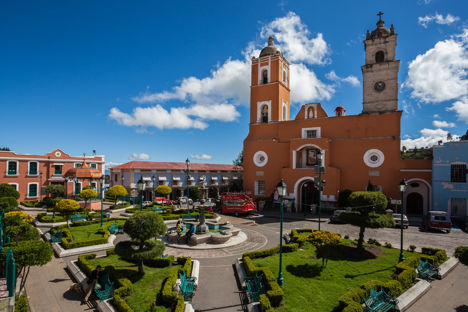
The Cornish pasty’s journey to Mexico
Henry Coldstream looks at how Cornwall’s most famous dish found its way over to Mexico in the nineteenth century and became a staple of one state’s cuisine.
The Cornish pasty’s journey to Mexico
Henry Coldstream looks at how Cornwall’s most famous dish found its way over to Mexico in the nineteenth century and became a staple of one state’s cuisine.
Cornwall is home to some of the best ingredients, suppliers and producers in the whole of the UK. But while it’s generally famed for its dairy, fish and seafood above all else, the one thing that springs to mind when talking about Cornish food is always going to be the Cornish pasty. Loved by locals and sought out by tourists, these traditional pastries have been a central part of Cornwall’s food culture for centuries. However, if you’re looking to attend the annual International Pasty Festival or visit the world’s first Cornish pasty museum, you’ll need to head a bit further than Padstow or Truro. Both can be found 3,000 miles away in the hilltop town of Real Del Monte in the central Mexican state of Hidalgo. Why? It’s one of the only other places in the world which rivals Cornwall in terms of pasty popularity – and it’s all due to the arrival of 130 Cornish miners in 1825.
While early records suggest that pasties were something only the wealthy ate, particularly during medieval times, by the seventeenth century quite the opposite was true. Cornish pasties were predominantly made by housewives as working lunches for miners. This is where Cornish pasties get their distinct shape from — the large, plaited crust up one side would be used like a handle and then thrown away at the end, so that the workers didn’t end up eating dirt or poison from the tin they were mining. The Cornish pasties would either be eaten cold or heated on top of a steel bucket by putting a candle underneath.
Throughout the seventeenth and eighteenth century, the mining industry thrived in Cornwall and became the county’s main source of economy, with the machinery used regarded as some of the most advanced in the world. By proxy, that meant the local miners were the world’s foremost experts in using said equipment. However, this level of advancement eventually caused the downfall of the Cornish mining industry. As more deposits of precious metals were discovered around the world, miners from Cornwall were recruited abroad for their expertise, leading to a mass Cornish diaspora. This, in turn, led to the closure of many Cornish mines and a local recession, meaning that by 1825, miners were forced to look for work elsewhere.
So where does the Cornish pasty come into all of this? Well, one of the places that Cornish miners went to work in the early nineteenth century was Mexico’s Central Highlands, in particular the state of Hidalgo. In fact, almost every year between 1825 and 1840, a new batch of miners would make the journey from Cornwall over to Mexico, and with them they brought their love for pasties. Wanting to maintain a level of familiarity in an otherwise unfamiliar country, the wives of the miners began making their husbands pasties to take down the shafts as normal. The traditional Cornish pasty recipe then started to be passed on to the locals, who began making them themselves and filling the pasties with some more typically Mexican ingredients.
Over time, the resulting Mexican pasty became known as a paste (pronounced past-ay), and these are still one of the area’s most popular dishes to this day. To look at them they’re pretty indistinguishable – generally slightly larger than a regular Cornish pasty, but still the same crescent shape and with the same crimping along one side. What does differ though is the filling, which can vary hugely. While a Cornish pasty must be filled with potato, beef, swede and onion (according to its PGI protected status, which it was awarded in 2011), you’ll find everything from red mole and tinga to fish inside the Mexican paste. This is partly due to the local climate – while the original Cornish miners tried to grow swede when they arrived in Hidalgo all those years ago, it proved tricky in the much warmer temperatures. Over the years, locals began looking for alternatives and the paste developed a personality of its own.
At the centre of the paste craze was, and still is, the gorgeous town of Real del Monte, which has a paste shop on practically every street, each boasting their own recipes which have been passed down through the generations. Many of these shops and bakeries even display the Cornish flag in their windows as a nod to the paste’s origin. Every October, thousands of Mexicans flock to this small town for the International Paste Festival, where people can try a number of different versions of the pastry from various street sellers and attend various events at the town’s Cornish pasty museum.
The Cornish influence in Real del Monte and its surrounding area stretches beyond the paste, however. Many houses in the town have sloping, red iron roofs — a classic feature of traditional Cornish cottages — which is unique to this part of the country. Those Cornish minors also brought their religion with them; the building of the Methodist church in nearby Pachuca was actually financed by a Cornish miner called Francis Rule.
It may seem strange to think that a town so far away from where the pasty first originated now arguably celebrates it more than Cornwall itself. However, the journey of the Cornish pasty across the Atlantic is a wonderful illustration of the part that history has to play in the development of cuisines across the globe. Had those 130 miners not brought their treasured pasties to Mexico in 1825, Real del Monte would be a rather different place today.


